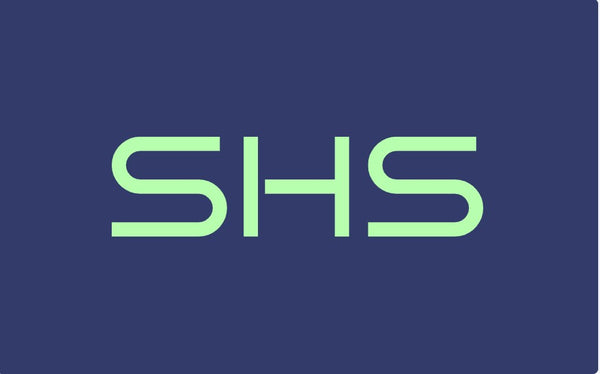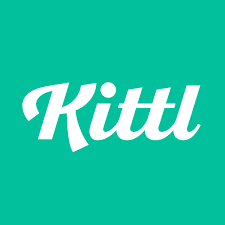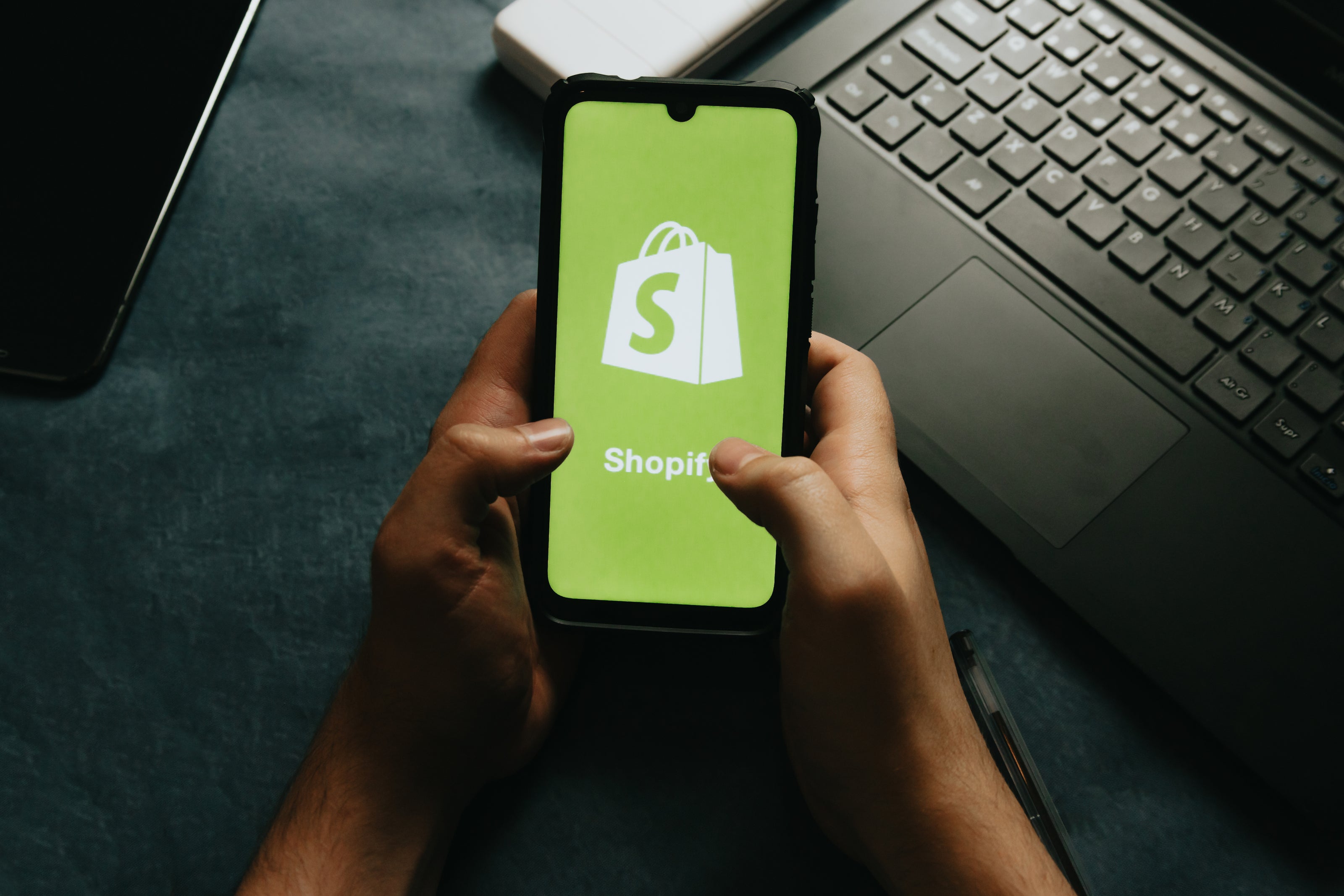
Amazon KDP Pricing Calculator: Maximizing Profits for Self-Publishers
Share
If you’re a self-publisher on Amazon, knowing how to price your eBooks effectively can be the key to your success. The Amazon KDP Pricing Calculator is a helpful tool that can guide you in setting the right price for your books. This article will explore how to use the calculator to maximize your profits while also reaching your target audience effectively. Amazon KDP pays royalties approximately 60 days after the end of the month in which a sale is reported, with specific details on payment methods and minimum payout thresholds.
The KDP Pricing Calculator helps authors find the best price for their eBooks and paperbacks, ensuring better earnings and wider readership. Understanding costs and royalties is essential; the calculator shows options for 35% and 70% royalties, factoring in expenses like printing and delivery. The book's list price impacts author royalties, as royalties are based on the list price set by the author, even if Amazon sells the book at a discount.
Market research is vital; knowing what readers are willing to pay and what competitors charge can help set a competitive price. Regularly reviewing sales data and adjusting prices can lead to increased earnings; books that adapt to sales trends perform better. Experimenting with different price points and promotional strategies can help authors discover the best price that maximizes both sales and profits.

Amazon KDP Pricing Calculator - Key Takeaways
- The KDP Pricing Calculator helps authors find the best price for their eBooks and paperbacks, ensuring better earnings and wider readership.
- Understanding costs and royalties is essential; the calculator shows options for 35% and 70% royalties, factoring in expenses like printing and delivery.
- Market research is vital; knowing what readers are willing to pay and what competitors charge can help set a competitive price.
- Regularly reviewing sales data and adjusting prices can lead to increased earnings; books that adapt to sales trends perform better.
- Experimenting with different price points and promotional strategies can help authors discover the best price that maximizes both sales and profits.
Understanding the Amazon KDP Pricing Calculator

When we dive into the world of Amazon KDP publishing, one of the first things we need to get a grip on is the KDP Pricing Calculator. The book's printing cost influences the minimum list price, ensuring authors cover printing expenses and earn royalties. This handy tool is our best friend when it comes to figuring out how to price our Amazon KDP books. It’s not just about slapping a number on our book; it’s about making smart choices that can help us earn more.
What is the KDP Pricing Calculator?
The KDP Pricing Calculator is a tool provided by Amazon that helps us determine the best price for our eBooks and paperbacks. It assists with printing cost calculations by taking into account various factors like printing costs, delivery fees, and taxes. This way, we can see how much we’ll actually earn based on the price we set.
How Does the Calculator Work?
Using the calculator is pretty straightforward. Here’s how it works:
- Input your book details: Enter the list price, book format, and other relevant info.
- Review the results: The royalty calculator shows us our potential royalties based on the price we set.
- Adjust as needed: We can tweak the price to see how it affects our earnings.
Benefits of Using the Calculator
Using the KDP Pricing Calculator has several perks:
- Maximize earnings: Helps us find the sweet spot for pricing.
- Understand costs: Breaks down printing and delivery costs.
- Experiment easily: Allows us to test different price points without any hassle.
The KDP Pricing Calculator is essential for anyone using Amazon KDP for beginners. It helps us make informed decisions about pricing, ensuring we don’t leave money on the table.
In summary, understanding the KDP Pricing Calculator is crucial for our success as self-publishers. It’s not just a tool; it’s a strategic partner in our journey to maximize profits!
Setting the Right Minimum List Price for Your eBook

Factors to Consider
When we think about pricing our eBook, there are a few key things we should keep in mind:
- Market Trends: What are similar books in our genre selling for?
- Production Costs: How much does it cost to produce our book, including printing and delivery?
- Book's List Price: The book's list price directly impacts author royalties. While royalties are based on the list price set by the author, discounted sales by platforms like Amazon may increase sales volume without affecting the author's earnings. However, be cautious of price matching that could lead to reduced royalties.
-
Reader Expectations: What do our potential readers expect to pay for a book like ours?
Common Pricing Strategies
Here are some strategies we can use to set our eBook price:
- Competitive Pricing: Price our book similarly to others in our genre.
- Value-Based Pricing: Set a price based on the perceived value of our content.
- Psychological Pricing: Consider pricing just below a round number (like $2.99 instead of $3.00) to make it seem cheaper.
Impact of Price on Sales
The price we set can greatly affect our sales. A higher price might mean more profit per sale, but it could also scare off potential buyers. On the other hand, a lower price might attract more readers but could reduce our earnings. Here’s a quick look at how different price points can impact sales:
| Price Point | Estimated Sales Volume | Royalty Rate |
|---|---|---|
| $0.99 | High | 35% |
| $2.99 | Moderate | 70% |
| $9.99 | Low | 70% |
Remember, pricing isn’t a one-time decision. We should regularly review our sales data and adjust our prices as needed. This way, we can find that sweet spot where our book sells well and we earn good royalties.
Maximizing Royalties with the KDP Pricing Calculator

When we dive into the world of self-publishing, one of the most important tools at our disposal is the KDP Pricing Calculator. This handy tool helps us figure out how to maximize our earnings from our books. Let’s break it down!
Choosing Between 35% and 70% Royalties
One of the first decisions we face is whether to go for the 35% or 70% royalty option. Here’s a quick look at what each option means for us:
| Royalty Rate | Description | Minimum List Price |
|---|---|---|
| 35% | Available for all books | None |
| 70% | Higher earnings, but has restrictions | $2.99 (or higher) |
Choosing the right royalty rate can significantly impact our profits. If we can meet the requirements for the 70% rate, it’s usually the better choice.
Calculating Your Royalties
To calculate our royalties, we can use the formula:
- For eBooks: (List Price - Delivery Cost) x Royalty Rate
- For Paperbacks: (List Price - Printing Cost) x Royalty Rate
This means we need to keep an eye on our costs to ensure we’re maximizing our take-home pay.
Tips for Maximizing Earnings
Here are some tips to help us make the most of our pricing strategy:
- Experiment with different price points to see what works best for our audience.
- Regularly check our sales data to understand how price changes affect our sales.
- Consider market trends and adjust our prices accordingly to stay competitive.
Remember, pricing isn’t set in stone! We should be ready to adjust our prices based on what we learn from our sales data and market research.
Experimenting with Different Price Points

Why Experimentation is Important
When it comes to pricing our eBooks, experimenting with different price points can lead to better sales. By trying out various prices, we can find what works best for our audience. It’s like testing the waters to see how readers react.
How to Test Different Prices
Here’s how we can effectively test different prices:
- Start with a lower price to attract initial readers and reviews.
- Monitor sales closely to see how changes affect our earnings.
- Adjust the price based on feedback and sales performance.
Analyzing the Results
After we’ve tried different prices, it’s crucial to analyze the results. We can use the KDP Pricing Calculator to see how our royalties change with different price points. Here’s a simple table to help visualize potential earnings:
| Price Point | Estimated Sales | Estimated Royalties |
|---|---|---|
| $2.99 | 100 | $2.09 |
| $4.99 | 80 | $3.49 |
| $9.99 | 50 | $6.99 |
Remember, prices aren’t set in stone. They should change based on what we learn from our sales data.
By experimenting with our pricing strategy, we can find that sweet spot that maximizes our profits while keeping our readers happy!
Incorporating Market Research into Your Pricing Strategy
Understanding Your Audience
Diving into market research is a must before we even think about the KDP Pricing Calculator. We need to connect with our audience, and that means knowing what they’re buying and what prices they’re comfortable with. Here are some key points to consider:
- What are readers in our genre purchasing?
- What price points are they willing to pay?
- How are our competitors pricing their books?
Analyzing Competitor Prices
A key piece of data shows that eBooks priced between $2.99 and $9.99 make up over 50% of all eBook sales on Amazon. This is a golden nugget for us as authors because it highlights a sweet spot for our book's price. But it’s not just about fitting into this range; we also need to consider:
- The page count of our book.
- The format (eBook, paperback, hardcover).
- The production costs if we’re going for print.
Using Market Trends to Your Advantage
We should avoid the mistake of ignoring market trends. Analyzing top-selling books in our genre can give us insights into effective pricing strategies. Here’s how we can do it:
- Research the top sellers in our category.
- Adjust our pricing based on what we find.
- Test different price points to see what works best.
Remember, it’s all about finding that balance where our book is priced competitively while still giving us fair royalties. The KDP Pricing Calculator is our best friend here, helping us see how different prices affect our earnings. Experimentation is key!
Leveraging Promotions and Discounts
When it comes to pricing our Kindle eBooks, we need to think beyond just the numbers. Using promotions and discounts can really help us boost our sales and connect with readers. It's important to note that while electronic payments have no minimum threshold for payouts, check and wire payments require a minimum of $100 in the US and 100 euros in European marketplaces, impacting how authors receive their royalties. Here’s how we can make the most of it:
Types of Promotions
- Limited-Time Discounts: Offering a temporary price drop can attract new readers.
- Free Promotions: Giving away our eBook for free for a short time can help us gain visibility and reviews.
- Bundling: Pairing our book with others can create a better deal for readers.
When to Offer Discounts
- During Holidays: Special occasions often lead to increased shopping.
- Book Launches: A discount can help generate buzz when we first release our book.
- After a Sales Dip: If we notice sales slowing down, a discount can reignite interest.
Measuring the Success of Promotions
To see if our promotions are working, we can track:
- Sales Numbers: Are we selling more books?
- New Reviews: Are we getting more feedback from readers?
- Reader Engagement: Are more people following us or signing up for our newsletter?
By keeping an eye on these factors, we can adjust our strategies and find what works best for us. Remember, the goal is to not just sell more books but to build a lasting relationship with our readers!
Adjusting Prices Based on Sales Data

Importance of Sales Data
When we publish a book, we often set a price and then forget about it. But book prices aren’t set in stone! They should change based on how well our book is selling, what readers are saying, and what’s happening in the market. By regularly checking our sales data, we can spot opportunities to boost our sales and revenue.
How to Analyze Sales Trends
Here’s a simple way to keep track of our sales data:
- Set a monthly schedule to review our sales numbers.
- Use the KDP Pricing Calculator to see how different prices affect our royalties.
- Look for patterns in sales data to understand what price points work best.
| Month | Sales Volume | Price Point | Estimated Royalties |
|---|---|---|---|
| January | 150 | $2.99 | $105 |
| February | 200 | $2.99 | $140 |
| March | 100 | $3.99 | $70 |
Making Data-Driven Price Adjustments
If we notice a dip in sales, it might be time to adjust our price. For example, if we lower the price slightly, we could attract more readers. Here are some tips for making smart price changes:
- Experiment with different price points to see what works.
- Consider reader feedback and adjust accordingly.
- Stay aware of market trends to keep our pricing competitive.
Remember, staying flexible with our pricing strategy can lead to better earnings. Finding that sweet spot where our book’s value is recognized can make a big difference in our success!
Understanding Costs and Royalties for Print Books

When we dive into the world of print books on Amazon KDP, understanding costs and royalties is super important. Knowing how much we’ll earn can help us set the right price and maximize our profits.
- The fixed cost and per-page cost for books printed in black ink significantly impact the overall printing expenses and, consequently, the minimum list price for self-published books.
- The use of premium color ink affects the overall printing expenses, and authors should assess the importance of color images relative to pricing.
Factors Affecting Print Costs
There are a few key things that determine how much it costs to print our book:
- Page Count: More pages mean higher costs.
- Printing Color: We can choose between black and white, standard color, or premium color.
- Country of Sale: Different countries have different costs.
- Book Type: Whether it’s a paperback or hardcover affects the price. Printing hardcover books involves higher fixed and per-page costs due to the stiff cardboard cover and high-quality paper used for the pages. Printing paperback books also incurs costs, which vary across different marketplaces and affect potential royalty calculations for authors.
Printing Cost Calculations and Print Royalties
To figure out our royalties, we can use this simple formula:
(Royalty Rate * List Price) – Printing Costs = Royalty
Here’s a quick look at printing costs for paperbacks:
| Country | Fixed Cost | Per-Page Cost | Book Length |
|---|---|---|---|
| US | $2.15 | None | 24-108 pages |
| US | $0.85 | $0.012/page | 110-828 pages |
| Canada | 2.82 CAD | None | 24-108 pages |
| Canada | 1.11 CAD | 0.016 CAD/page | 110-828 pages |
| UK | 1.70 GBP | None | 24-108 pages |
| UK | 0.70 GBP | 0.010 GBP/page | 110-828 pages |
Balancing Print and eBook Prices
It’s also smart to think about how we price our print books compared to eBooks. Here are some tips:
- Keep it Competitive: Look at what similar books are priced at.
- Consider Your Audience: What are they willing to pay?
- Adjust as Needed: Don’t be afraid to change prices based on sales data.
Understanding these costs and royalties helps us make informed decisions about pricing our print books. It’s all about maximizing our earnings while keeping our readers happy!
Expanded Distribution and Its Impact on Pricing
What is Expanded Distribution?
Expanded distribution is a way for us to get our books into more places beyond just Amazon. It’s like opening the door to a whole new audience! However, we need to keep in mind that if our book is already with another distributor, like IngramSpark, we can’t choose this option.
Pros and Cons of Expanded Distribution
When we think about expanded distribution, there are some important things to consider:
- Wider Reach: Our book can be available in more stores and libraries.
- Lower Royalties: We usually earn a lower royalty rate, around 40%, for these sales.
- Visibility: It can help our book get noticed by readers who might not shop on Amazon.
Setting Prices for Different Markets
When we set prices for expanded distribution, we need to be smart about it. Here’s a quick guide:
- Minimum Price: We can’t sell our print book for less than it costs to print. The formula is: printing cost / 60% (royalty rate) = minimum list price.
- Maximum Price: There are limits on how much we can charge. For example, the max price on Amazon.com is $250.
- Regional Pricing: Different regions might have different buying powers, so adjusting our prices can help us reach more readers.
Remember: Pricing isn’t just about numbers; it’s about how our book is perceived. A lower price might attract more readers, but it can also suggest lower quality. Finding the right balance is key!
Common Mistakes to Avoid When Pricing Your Book
When it comes to pricing our books, we often stumble into some common traps. Understanding the book's printing cost is crucial to avoid underpricing, as it influences the minimum list price you can set on KDP. Let’s break down a few of these mistakes so we can steer clear of them together.
Underpricing Your Book
One of the biggest blunders we can make is setting our book price too low. Pricing our book at $0.99 might seem like a good idea to attract readers, but it can backfire. Readers might think our book lacks value, leading to fewer sales. Instead, we should aim for a price that reflects the quality of our work. Here’s a quick guide:
- Ebooks: $2.99 - $9.99
- Paperbacks: $7.99 - $19.99
- Hardcovers: $12.99 - $29.99
Ignoring Market Research
Another mistake is ignoring what’s happening in the market. We need to keep an eye on similar books in our genre. If our book is priced higher than others, we might lose potential readers. Here’s what we should do:
- Analyze competitor prices.
- Adjust our price to fit within the genre norms.
- Consider our book’s length and quality.
Failing to Adjust Prices Regularly
Lastly, we can’t just set a price and forget about it. Prices should change based on sales data and reader feedback. If we notice a dip in sales, it might be time to lower the price. We should:
- Set a monthly schedule to review sales data.
- Use the KDP Pricing Calculator to see how different prices affect our royalties.
- Experiment with price adjustments to find what works best.
Remember, pricing is not a one-time decision. It’s an ongoing process that can significantly impact our book’s success.
By avoiding these common mistakes, we can better position our books in the market and maximize our profits!
Real-Life Success Stories of Pricing Strategies
Case Study: Finding the Sweet Spot
When we think about pricing our books, it’s easy to just pick a number and move on. But real success comes from experimenting! One author we know started with a low price to attract readers. After getting some positive reviews, they raised the price. This strategy not only boosted their sales but also increased their perceived value.
Lessons Learned from Successful Authors
Here are some key takeaways from authors who nailed their pricing strategies:
- Adjust prices regularly: Don’t set it and forget it! Regularly check your sales data.
- Research competitors: Look at what similar books are priced at. This can guide your pricing decisions.
- Use the KDP Pricing Calculator: This tool helps you see how different prices affect your royalties.
Applying These Strategies to Your Book
To make the most of these lessons, we can:
- Set a monthly review: Check your sales data and adjust prices as needed.
- Experiment with price points: Try different prices to see what works best.
- Stay informed: Keep an eye on market trends and adjust accordingly.
Remember, pricing isn’t just about numbers; it’s about understanding your audience and what they value. Finding that sweet spot can lead to greater success!
Discover how real people have used smart pricing strategies to achieve amazing results in their businesses. These success stories show that with the right approach, you can also reach your goals. Want to learn more? Visit our website for tips and resources that can help you succeed!
Wrapping It Up: Your Path to Pricing Success
So, there you have it! Using the Amazon KDP Pricing Calculator can really help you find the best price for your book. Remember, it’s not just about picking a number; it’s about understanding your audience and what they’re willing to pay. Don’t be afraid to try different prices and see what works best. Keep an eye on your sales and adjust as needed. Your book is a piece of your hard work, so make sure it’s priced right to reflect its value. With a little patience and smart choices, you can boost your sales and make your self-publishing journey a success!
Further Reading on the Amazon KDP Business Model
Frequently Asked Questions
What is the KDP Pricing Calculator?
The KDP Pricing Calculator is a tool from Amazon that helps authors figure out the best price for their eBooks and paperbacks. It takes into account things like printing costs and delivery fees to calculate potential earnings.
Why is setting the right price important for eBooks?
Setting the right price is key because it can greatly affect how well your book sells. A good price can attract more readers, while a bad one might lead to fewer sales.
What are the royalty options available for eBooks on KDP?
Authors can choose between two royalty options for eBooks: 35% and 70%. The choice you make will influence how much money you earn from your book sales.
How can market research help with pricing my eBook?
Market research helps you understand what readers are willing to pay and what similar books are priced at. This information can guide you in choosing a competitive price.
Can I change my book's price for different formats or regions?
Yes, authors can adjust their book prices for different formats, like eBooks and paperbacks, and for various regions. This flexibility can help maximize sales and earnings.
What is expanded distribution and how does it affect pricing?
Expanded distribution allows your book to reach readers outside of Amazon. While it can increase visibility, it often comes with lower royalty rates, so pricing needs to be adjusted accordingly.
How often should I review and adjust my eBook prices?
It's a good idea to review your eBook prices regularly, ideally once a month. This way, you can make changes based on sales data and reader feedback.
What should I do if I see a drop in sales?
If you notice a drop in sales, consider lowering your book's price slightly. This can make it more appealing to potential readers and help boost sales.











































































































